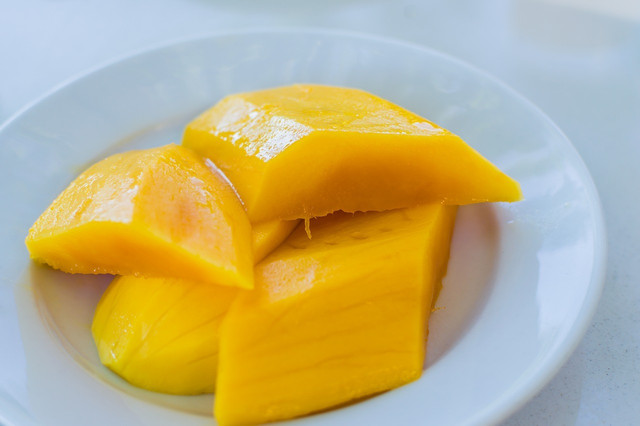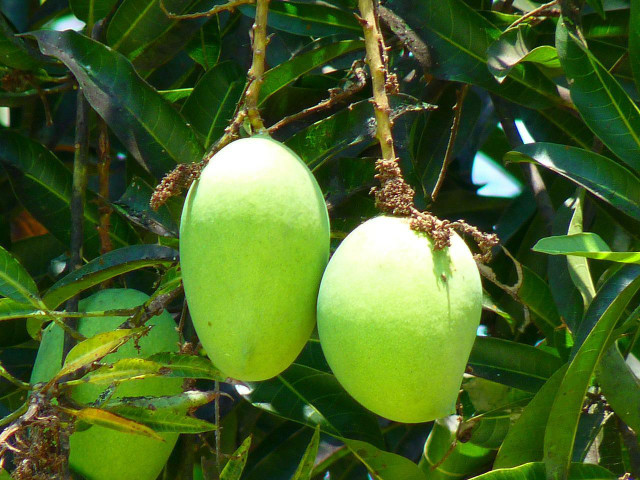Most people throw the skin of fruits in the trash, but mango skins are in fact edible. We’ll tell you why mango skins may be good for you, and how you can eat them.
Although you usually eat mango peeled, it is actually safe to eat the skin. Like many other fruits, the skin on mangoes is far more nutritious than the flesh of the fruit. Most people avoid eating mango skins because it can be unpleasant to eat raw due to the thick texture that makes it hard to chew, as well as the bitter taste. Read on for some ideas on how to incorporate mango skins into various recipes.
What Are the Benefits of Eating Mango Skins?

(Foto: CC0 / Pixabay / toodlingstudio)
There are many health benefits to eating mango skins, as they are packed full of vitamins and minerals as well as many other nutrients. A 2022 study concluded that mango consumption is associated with overall nutrient intake, diet quality and weight-related health outcomes.
- They are full of fibre. Fibre makes up 45-78 percent of the mango skin. Fibre is important for our digestive health, and having a high fibre diet reduces the risk of type 2 diabetes, cardiovascular disease and colon cancer.
- Mango skin is high in vitamins and minerals, including vitamins A, C, E and B6, potassium and copper. Sufficient levels of copper in the diet help to maintain healthy bones, blood vessels and nerves, and is considered good for skin, nails, and hair.
- Mango skin is particularly high in vitamin C. Vitamin C is known to lower the risk of heart disease as well as certain cancers.
- Mangoes are rich in vitamin K, which helps your blood clot properly and helps prevent anaemia. Research shows that vitamin K supports strong bone health, can prevent certain types of cancers, especially liver cancer, and can protect against coronary heart disease.
- Fresh mango is a good source of potassium, which is necessary for the normal functioning of all cells. High potassium diets are associated with a lower stroke incidence, and potassium helps to keep blood pressure in a healthy range.
- Eating mangoes can protect against cancer. A 2017 study found that mangiferin, a bioactive compound found in mangoes, can protect against several human cancer types, including lung, colon, breast, and neuronal cancers.
Drawbacks of Eating Mango Skins



(Foto: CC0 / Pixabay / LoggaWiggler)
Although mango skins are safe to eat for most people, some people should avoid eating mangoes and their skins. Here’re some reasons why:
- Certain people may be allergic to mango skin, as the tree that they grow on contains urushiol, an allergen found in poison ivy.
- Mango skin may contain pesticide residue, if pesticides were used during the farming process. If you want to avoid pesticides, buying organic mangoes is a good option, as they will be free of synthetic fertilizers, herbicides and pesticides.
- People with an allergy to latex may have a cross-reaction with mangoes.
Edible Mango Skins Recipes



(Foto: CC0 / Pixabay / Imoflow)
Whether you are slicing a mango, or eating it whole, be sure to wash the skin thoroughly with water to remove any dirt, germs and pesticide residue. Here are some recipe ideas to incorporate mango skin into your diet:
- Add it to a smoothie. Blending mango skin in a smoothie or juice is a good way to disguise the taste and texture of the mango skin.
- Add it to a salads, like an avocado mango salad.
- Dry mango.
- Make mango peel syrup or pickled mango peel.
Read more:
- Can You Eat Banana Peels? What You Should Know
- 8 Avocado Substitutes for Sandwiches, Salads & More
- Quick Fruit Salad Recipe
Do you like this post?






